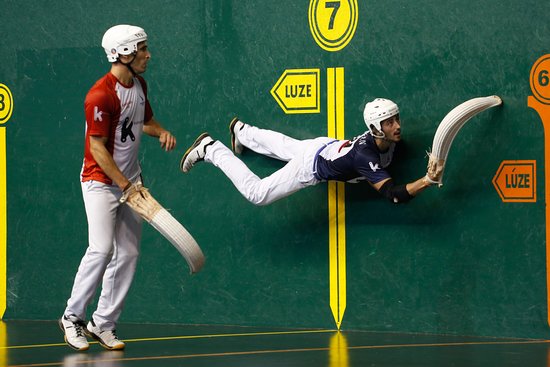- Our On-Site Arnold Classic Coverage
- XFL AND USFL ANNOUNCE INTENT TO MERGE
- Apparel, Subscriptions, Back & Single Issues
- Ammannomics Our 2023 Olympia Title Sponsor
- Gregg Valentino – Blocking All Estrogen is Bad / Best Liver Care Advice / Right Amount of Protein
- Springballers Daily USFL Updates
- Magzter Digital Version of MuscleSport Magazine
- mSm APP – Free Download
- Earning a Living in the Bodybuilding / Fitness Industry
- Three Instagram Live Shows Per Week
Jai Alai – A Player’s Strike Struck the Sport Down in the USA
- Updated: October 24, 2020
 Trip Advisor
Trip Advisor
Call it the perfect storm, time-wise, for something that was ready to explode to implode. The sport of jai alai had turned from an obscure import from Europe at the turn of the twentieth century to a jet-setting sport of sorts, with A-listers and even presidents becoming regular spectators during the World War Two era. But it really began to flourish as an outlet for gambling like horse racing.
Any time that there is money to be made, people will pay attention. The race track, sports book at the casino, or online slots in Pennsylvania. If folks feel that they can turn a profit and be entertained at the same time, eyes will be fixated.
So what exactly is jai alai, you may ask yourself? It is played in a 175-foot court similar to racquetball, with the fourth wall being on the right side and of the ‘open’ variety (plexiglass or a chain link fence, for example) to allow for the fans to have a full view of all the action. It’s a one-on-one game, with each player wearing a glove-like curved basket device called a cesta that they use to catch the pelota (ball), which they then whip off the front wall at speeds in the 150 miles per hour range. A point is scored if the opponent cannot catch and return a live ball that stays in bounds. If you lose a point, you are relegated to the end of the bench and only get another opportunity if the rest of the ones ahead of you are out before one of them scores seven or nine points, depending on the rules for that particular event.
There are also versions of the game with 16 total players at the start and it being of the doubles variety, common in tennis racquetball. The strategy is quite a bit different since more of the court can be covered by a teammate. And in the case of a lost point, both players on that ‘team’ rotate out.
The state of Florida became the epicenter for jai alai and the courts the game is played on/in – which are called frontons – began to pop up in cities like Miami for over four decades beginning in the 1950s. Other states such as Connecticut and Nevada also tried their hand at jai alai with some success, but the main place for the best players remained in Florida.
The seating capacity at the frontons grew from 7,000 to 13,000 and the gambling aspect made it a money maker. The players – who frequently suffered injuries due to the risk factor – felt that they should receive a raise and went on strike in 1988 – for three years. If a work stoppage in 1994 affected Major League Baseball for as long as it did (only to be rescued by the steroid era’s home run chase four season later), then a sport like jai alai didn’t have a chance. Scab players were brought in until the contract issues were worked out, but the fans didn’t stick around long enough to notice; the already-niche sport had been mostly forgotten.
It still exists today, however, with Florida still being the hot spot for the top talent worldwide. The Basque section of Spain – the birthplace of jai alai – is still in the equation, but the money is made in Florida. The top player’s in the world can earn earn a salary in the six figures and although the gaming aspect is prevalent, the city of St. Petersburg, Florida built a court for amateurs where there is no gambling involved.
The amount of spectators has dropped to less than 1,000 per event, a far cry from its hey day with 13 times that amount. But because Florida law dictates that in order for a casino to operate and rake in the millions of dollars lost in the slot machines and on the black jack tables, it must also have a sport on site. (EDITOR’S NOTE: This is not the case for Indian-run casinos.) So unless there is a change, jai alai – even though on its own is a losing proposition – will have a presence in the Sunshine State.
























